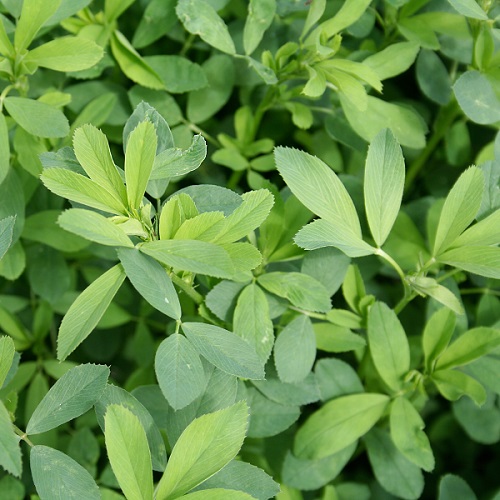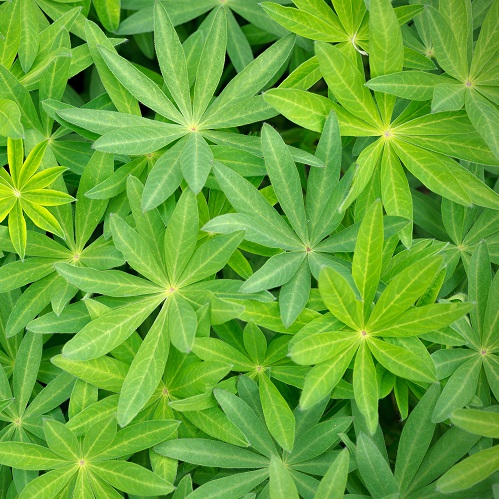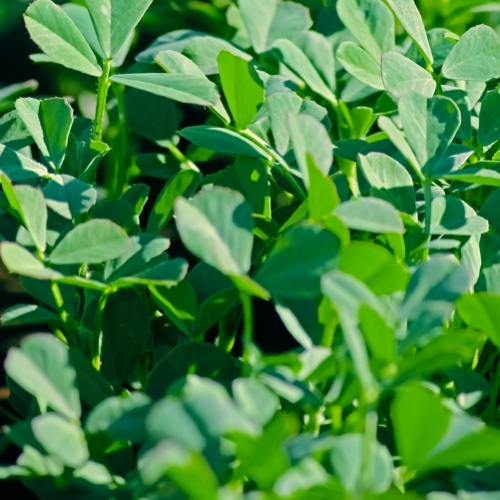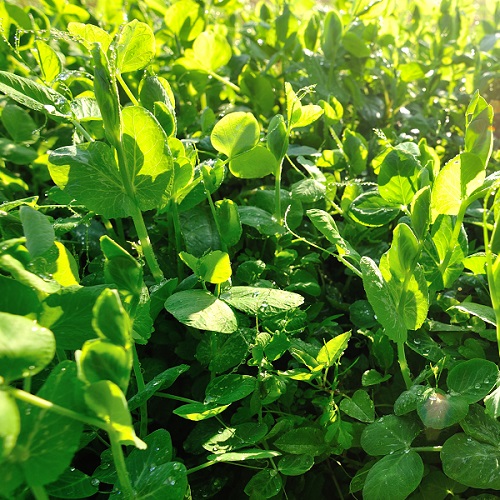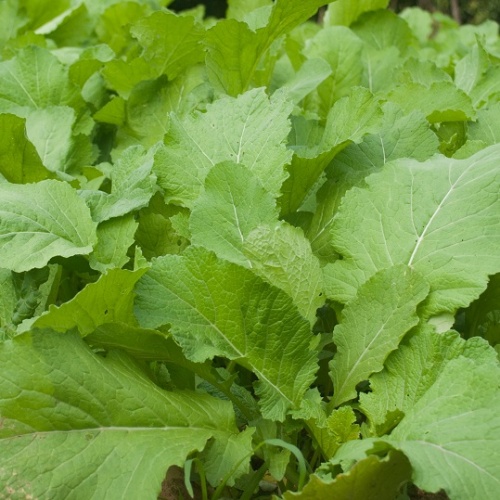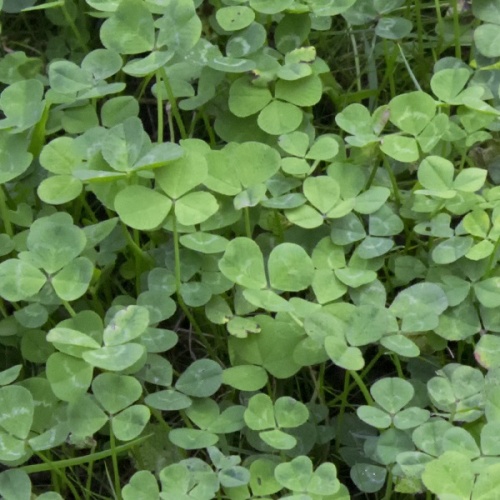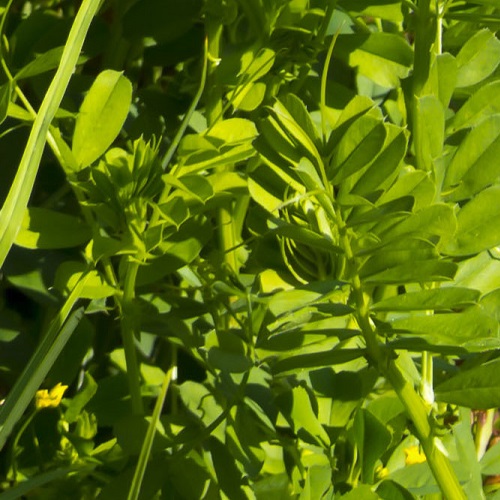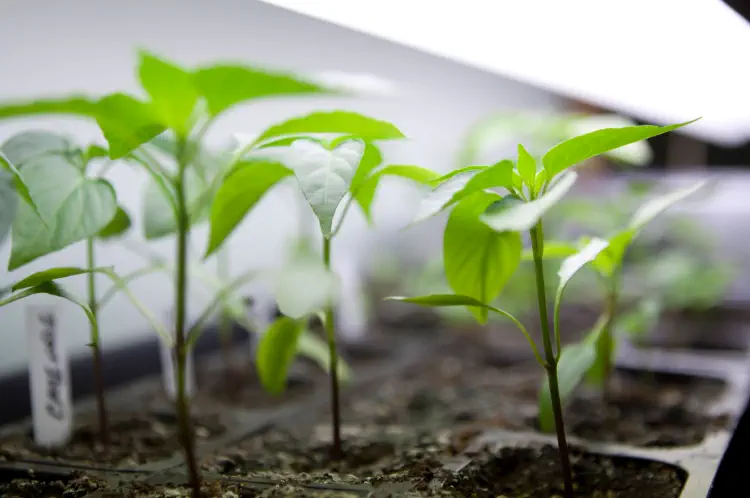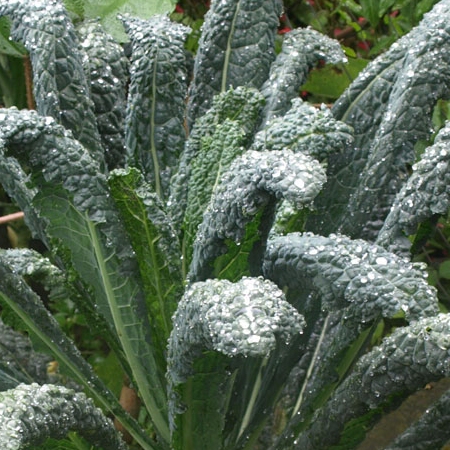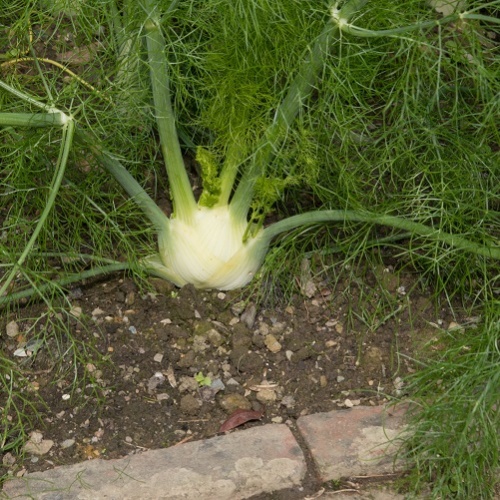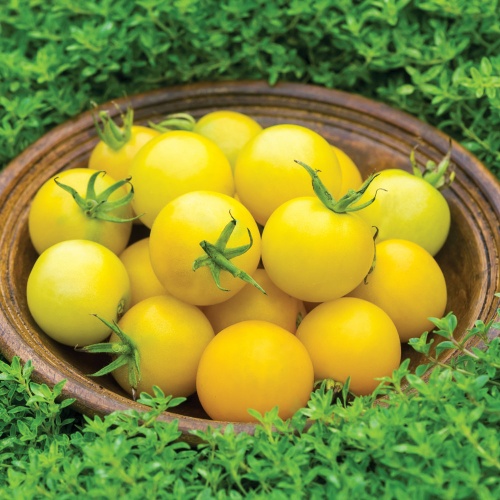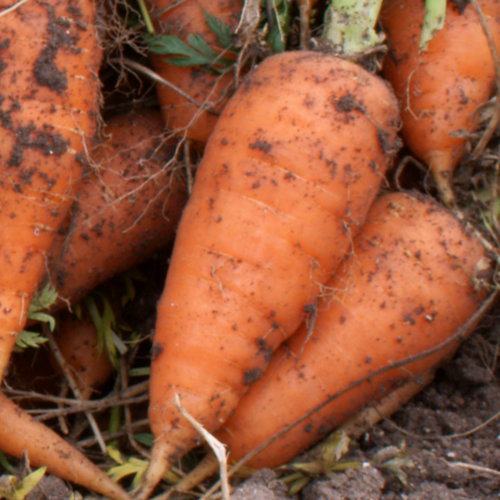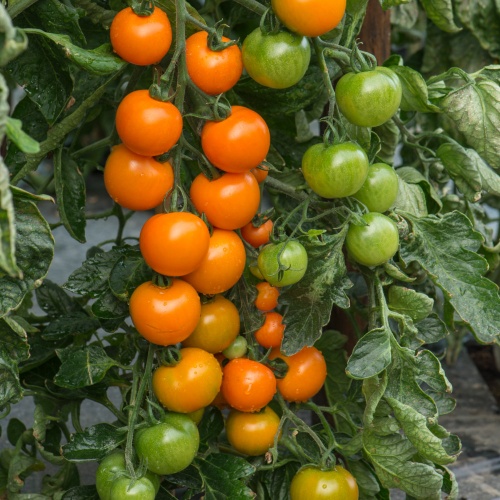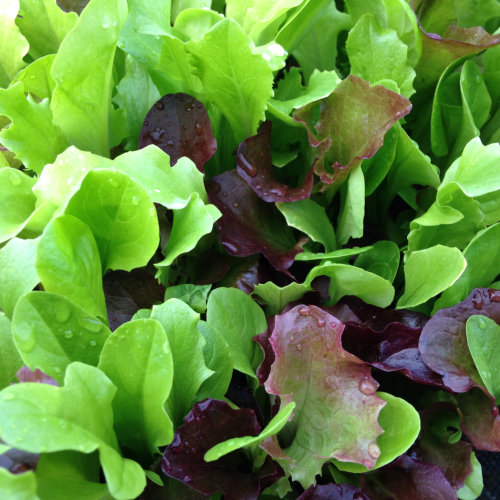Are you trying to decide between hardneck garlic and softneck garlic for your garden? Knowing what's the right variety for you and your garden will help you choose the best option. In this post we’ll go over the differences in growing conditions, flavour profiles and storage to help you decide which one is the preferred choice for you.
Why Use Green Manures
Most gardeners, especially those who are intent on growing a range of vegetables for the kitchen, know only too well the importance of incorporating nutrients into the soil prior to planting. During the growing period, vegetables will take up and use several types of nutrients, especially nitrogen, as do most green leaf type vegetables. Unless the soil is replenished with nutrients, it will soon become exhausted and infertile. Digging in well-rotted, organic matter in the autumn and winter months will readdress the balance and the soil will be ready for the next batch of vegetable crops come the following spring and summer. However, there is an alternative to digging in organic matter or compost, and that’s green manure.
Green manure for improving soil structure
This practice appears to be less popular with some gardeners because maybe it’s not fully understood but it can be just as effective as incorporating organic matter. It’s a good alternative for those who might be unable to obtain ample supplies of organic compost but it’s also a great supplementary way of improving the soil’s structure, nutrient and moisture retention. Light sandy soils would benefit enormously from the addition of green manure because light soils tend to leach nutrients very quickly over the winter months due to heavy rains. Even heavy clay type soils could benefit because digging in green manure helps to both “open” the soil and improve drainage.
What are green manures?
Green manures are fast growing plants that are generally sown after a crop has been harvested or before any new vegetable plants are ready to go out into their permanent beds. The idea is to sow the seeds of these specific plants quite generously so that they form a carpet over the ground. To this effect, they are also ideal for supressing weed growth too so this method could be used between rows of vegetables for this very purpose. There are various types of green leafy plants, which are used especially for this process, and selection may depend on the type of soil you have and the reason for growing green manure. For example, replenishing nitrogen levels in the soil, improving drainage or soil structure or for use as a groundcover in weed control. Think of green manure as a natural soil fertiliser.
Green manure for different soil types
Not all green manure plants will grow well on all soil types so initially, you might have to experiment a little to see which plants grow best in your soil. Heavy soils, such as those with high clay or silt content, are more suited to some of the leguminous type green manures of the pea family. Lighter soils will benefit from tough green manures that will add some body to the soil in the form of stems and roots such as lupins. For groundcover, you will obviously want to select a green manure plant that is low growing and dense such as clover. For anyone not too sure about which plants to select for the job then a general mixed selection may be the best option to start with.
Types of green manure plants
There are many plants that fit the description, which include those of the pea family and a few brassicas and all are therefore suitable for growing as green manure. Some rye grasses are valuable for this purpose too such as Forage Rye, although some types of ryegrass are usually added to a mixture, such as a general mix. There are spring and winter mixes also, which can be useful for gardeners who are not too sure about which ones to choose or who would like to supplement their usual organic matter additions in the autumn and winter. The use of green manure plants to replenish the soil has been practiced by farmers and commercial growers for many years. It is a natural, safe, organic method that has been steadily adopted by many amateur gardeners with obvious beneficial results.
Here are some of the most popular selections.
● Alfalfa – Is a member of the legume family, which is often grown commercially as a forage plant for livestock. That’s because it contains valuable vitamins and minerals that are returned to the soil when the plant breaks down. Alfalfa seeds are sown over bare ground from April to July. It takes about 10 weeks for the plants to mature enough, ready for digging back in or they can be left to overwinter and then turned in a few weeks prior to summer planting. It grows best on free-draining type soils and is excellent for replenishing nitrogen. It is quite a deep-rooted plant so can reach minerals deep down and bring them to the surface layer where they are most needed.
● Blue Lupin – Is another member of the legume family with long tap roots that help to break up heavier soil types. The seeds can be sown over bare ground from March to July and it takes about 12-14 weeks for the plants to grow large enough to be turned in. Lupins work best with light sandy soils, helping to add bulk to the soil and improving moisture retention. As with all legumes, Lupins are an excellent nitrogen fixing plant, which is said to fix more nitrogen than peas, beans and clover.
● Fenugreek – Is a herb of the Fabaceae or Leguminosae family, which is often grown for its medicinal properties. It is, however, also ideal as a green manure plant for slightly heavier soils with good drainage. It only takes around 8-10 weeks to grow large enough for turning into the soil and the seeds can be sown over a long period from March right through to August. Fenugreek will produce lots of valuable organic matter as it slowly breaks down in the soil.
● Forage Pea – Another plant of the legume family, which will happily grow well on most soil types. The growing period for this useful green manure is 4-6 months. It can be sown in September and left in the ground to overwinter. Don’t let this plant flower otherwise most of the valuable nutrients will be lost. Instead, cut the plants to just above ground level in late spring or early summer and leave the stems to dry or decay. Then dig the whole lot into the soil and allow to decompose for at least 2-3 weeks prior to planting out your vegetable seedlings.
● Forage Rye – Is suitable for use on most types of soil but heavy clay type soils will really benefit from this green manure. Grown mainly as an early spring animal feed, forage rye will retain nitrogen, help to break up the soil and prevent soil erosion, which makes it very useful for vegetable growing on large open allotments. It can be sown between August and November and left to overwinter. Turn in from early spring when preparing vegetable beds for planting. Allow 2-3 weeks before planting vegetable seedlings
● Mustard White Tilney – Mustard is a very fast growing member of the brassica family and White Tilney is the perfect green manure. It can be sown from March to September and turned in before it flowers when about 60cm high. Mustard White Tilney can produce a large volume of valuable organic matter in just 2 months. It will help improve soil texture and structure and is ideal for retaining moisture in the soil.
● Red Clover – Is perfect for light sandy soils, which it prefers and where it grows best. A fast growing perennial of the legume family, red clover is low growing and will, therefore, suppress weed growth. It’s also ideal as a nitrogen fixer, extracting nitrogen from the air, and it helps to add bulk to lighter soils. Its roots penetrate deep down into the soil, adding valuable water retaining fibre. Sow from April to September and turn in before the flowers die and set seeds. Red Clover can be left in the ground for up to 18 months.
● White Clover – Is another member of the legume family but unlike its red cousin, it can be grown on poor quality soils that are predominantly made up of silt or clay. Poor drainage is no problem either for the white clover plants. Seeds can be sown from March up to August and left to overwinter or left to grow in the ground for up to 5 years. White clover is excellent for suppressing weed growth, fixing nitrogen from the air and for improving soil structure. For best results dig in before flowering.
● Winter Tares – Also known as a ‘vetch’, winter tares are a member of the vicea genus and form part of the legume family. This hardy perennial is best for growing on heavy soil types but will not tolerate acid soils or light soils that dray out quickly. Sow the seeds from March to September, when the weather is not too hot or dry. The plants will grow quickly within 2-3 months, after which they can be dug into the soil before flowering or left to overwinter. Leave to decompose in the ground for at least 4 weeks before sowing any vegetable seeds.
● General Mixed – A typical general mixture of green manures consist of both legumes and brassicas and will almost likely include Minerva Maple Peas, Italian Ryegrass, Common Vetches and Forage Rye, which are suitable for most soil types. A general mix is a good choice if you are new to the idea of green manure and perhaps not quite sure which ones to choose. A selected mix will include plants that are good for groundcover, good at fixing nitrogen and returning it to the soil, useful as a natural fertiliser and good for improving soil structure and moisture retention.
A general mix is a good place to start with green manure for both the allotment and the vegetable garden. Sowing is from May to July and the growing period for a general mix is from 2-6 months, after which you can cut the stems and then dig everything into the soil. Alternatively, you can leave the growing plants to overwinter and then dig them in during the spring or early summer of the following year.
● Spring Mixed – As you might imagine a spring mix of green manure plants would be sown from March to May. This mix of legumes and brassicas will most likely consist of Italian Ryegrass, Tares and Mustard. This group are selected because they will germinate at low temperatures and are fast growing, taking only 2-4 months to mature. So as an example, if you sowed the spring mixed seeds in early March, the plants would be ready for turning in at the end of May or early June and the planting area could be ready to receive new vegetable plants in late June or early July. A spring mix is suitable for most soil types and the soil will benefit from the usual added nitrogen, improved soil structure and water retention.
● Winter Mixed – This is a specially selected mix of green manure plants that will overwinter in the soil and be ready for turning in from the spring and early summer of the following year. Sow a winter mix in August or September and the seeds will germinate and grow before the first frosts slow them down. A winter mix will usually consist of Westerworld’s Ryegrass and Winter Tares (Vetch). Sowing a winter mix of green manure is particularly beneficial for the soil because it can prevent a lot of valuable nutrients from being washed out by the winter rains. Most soil types from heavy clay to sandy soil could also benefit from a winter mix green manure.
Ground preparation and seed sowing
Whether you decide to sow a particular green manure plant variety or a mix in either spring or summer, you will need to first carry out a little preparation. Clear the area of any weeds and debris from a previous crop of vegetables. Cultivate the area by digging or use a rotovator if it’s a large area. Rake the cultivated ground to a level surface and then firm by treading or use a garden roller. Lightly rake the surface again and then sprinkle the green manure seeds over the prepared area. If you want a good ground cover to suppress weed growth then sow thickly. Finally, rake again lightly to cover the seeds and water if necessary. Then leave the area alone until the seeds have germinated. If the weather is dry then lightly water as required.
Incorporating the green manure plants into the soil
Give yourself plenty of time in deciding when to dig the green manure plants in. However, also take into consideration the time it will take for the green manure plants to begin to decompose. You don’t want to be planting vegetable seedlings into ground that has just had green manure plants turned in, as the decomposition stage will generate heat, which could damage your delicate seedlings. Try to allow at least 2-3 weeks before planting or sowing seeds to the prepared ground. Watering the ground during warm spells will help speed up the decomposition of the green manure plants.
If you are growing plants that have tall stems then cut the stems above ground level and leave them on the surface for a few days before digging the lot in. When turning over the soil, ensure the green manure plants are buried to a depth of at least 15cm on heavy soils and a little deeper at 20cm on lighter soils. If you intend to leave any planting areas fallow over the winter then consider sowing a green manure crop in the meantime. The soil will be vastly improved and the resulting vegetables will be so much more healthy, green and tasty.
Ground cover ideas
When growing vegetables it can become quite a chore having to continuously ensure there are no weeds growing between the rows. Weeds will encourage pests, which will in turn feed on your plants. An idea to help cut down on weed growth is to sow low growing green manure plants, such as clover, between the rows of vegetables. The clover flowers will attract bees, which will help pollinate your peas and beans. The flowers might also attract lacewing and hoverflies who feast on aphids. Meanwhile, the clover plants will add nitrogen to the soil, which will help feed your green vegetables. As the clover grows ever denser, it will suppress weed growth and save you some time.
Then when the vegetable crop has been harvested, the whole area can then be turned in and some well-rotted organic matter added and left to overwinter. The plot will benefit from the addition of both traditional and green manure giving you the best of both. The soil will be fully replenished with nutrients and ready for another bumper harvest in the following year.
Other plants too, such as fruit and many shrubs, could also benefit from green manure plants like clover for ground cover.

